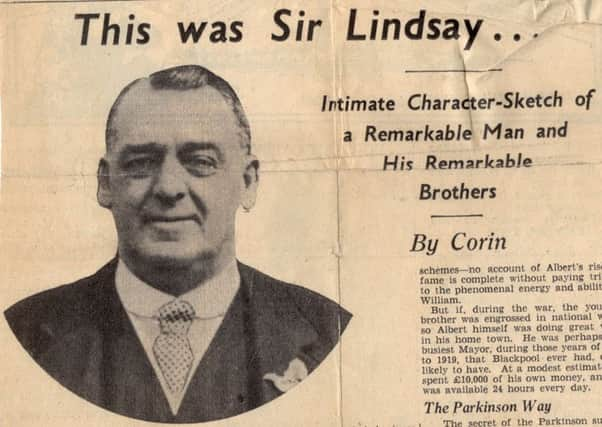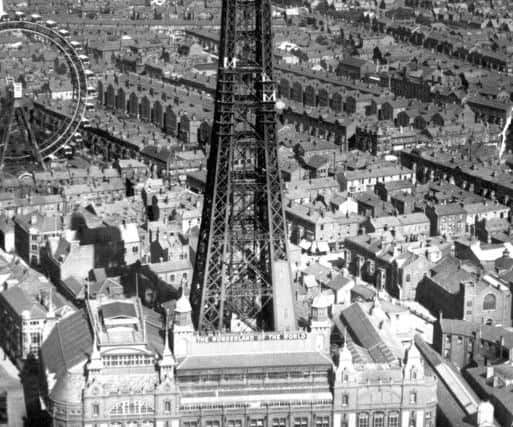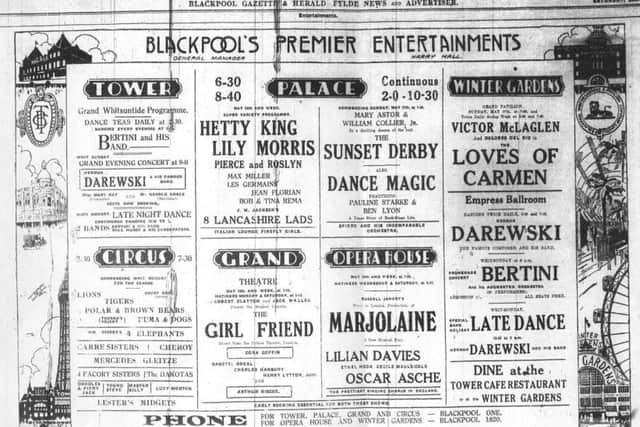Barry Band: How the Winter Gardens and Blackpool Tower came together to dominate


That was the opinion of solicitor Charles Hardman, chairman of the Blackpool Winter Gardens Company, as he and his fellow directors were about to be sacked.
It happened on May 12, 1928, when the Blackpool Tower Company took over its rival, with the assistance of the three main shareholders of the Gardens.
Advertisement
Hide AdAdvertisement
Hide AdThe acrimony ran deep at this extraordinary general meeting – with another Gardens director, former Mayor (1916-18) and MP (1918-22) Sir Lindsay Parkinson, adding his own opinion of some Tower directors: “They have acted like dirty dogs.”


The merger, as it was presented to the town, was the biggest in Blackpool’s history.
It was prompted by the two biggest Gardens shareholders.
They were Mrs Frieda Huddlestone, the widow of former Gardens managing director John Huddlestone, and Charles Badman, son of a previous Gardens chairman, Frederick Badman.
Both parties believed they were entitled to be on the Winter Gardens board by virtue of their large shareholdings.


But the Winter Gardens directors rejected their claims.
Advertisement
Hide AdAdvertisement
Hide AdSupported by another shareholder, timber merchant James Grandridge, Mrs Huddlestone and Mr Badman approached the Tower Company with an offer – to exchange their shares for Tower company stock.
Other shareholders followed the “rebels” and by May 12, the Tower had acquired most of the Gardens shares.
The Gardens board were dismissed and Mrs Huddlestone and Mr Badman were appointed to a new board chaired by Alderman Tom Bickerstaffe, the brother of Alderman John Bickerstaffe, chairman of the Tower Company.
Mr James Grandridge was appointed to the Tower board a year later.
Advertisement
Hide AdAdvertisement
Hide AdOn May 22, 1928, the first combined advertisement of the Winter Gardens and Tower showed what a powerful entity had been created to dominate the resort’s entertainments scene. The line-up included:
The Tower, with its iconic structure, its ballroom and its circus.
The Winter Gardens with its Opera House, its Pavilion, and Empress Ballroom.
The Grand Theatre.
The Palace with its big variety theatre, cinema and ballroom (closed and demolished in 1961-62).
Advertisement
Hide AdAdvertisement
Hide AdHistory has shown that the Tower take-over enabled the Gardens to be modernised and expanded, with the addition of the Olympia, the Galleon Bar, the Spanish Hall, the Baronial Hall in the early 1930s.
But the biggest boost from the merger of the two companies was the building of Britain’s largest provincial theatre, a new Opera House, in 1939.
It was the third Opera House on the site.
Ninety years after the merger, the now council-owned Tower and Winter Gardens are icons of the resort’s show business story.